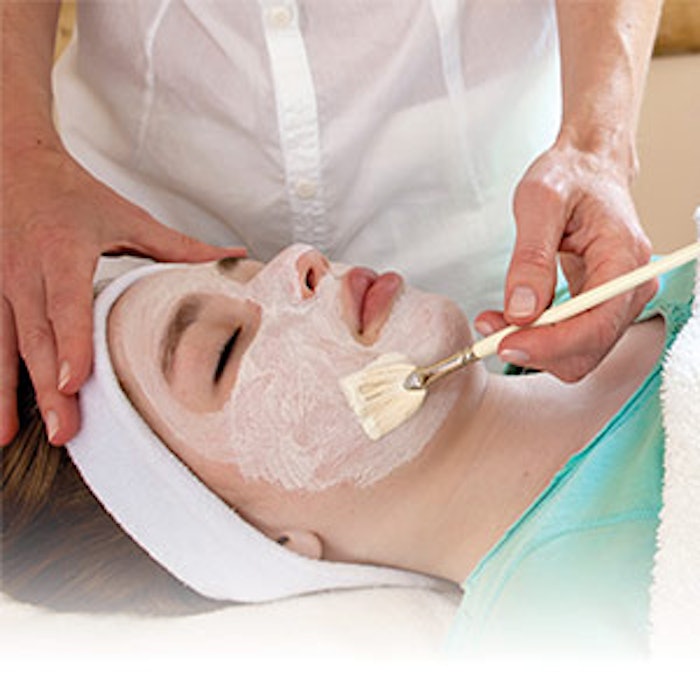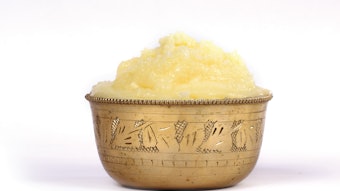
Chemical peels are one of the most effective anti-aging tools in an esthetician’s toolbox. Of course, their efficacy must be used responsibly to ensure proper skin healing.
There is an art form to peeling, and that art form becomes even more precise when performing medical peels. Deep superficial peeling requires an elevated peel program with particular attention to pre- and post-care that aims to heal wounds and strengthen the skin.
Post-care and skin recovery are important opportunities for estheticians to make a huge difference in their client’s skin. It starts with understanding the stages of wound healing, which is often a longer process with medical peels, as well as how to most effectively support the healing process.
Wound Stages
A wound is a disturbance of the normal skin barrier and an alteration of the skin function. A wound can come in many forms whether a burn, cut, abrasion, bruise ... the list goes on. In esthetics, the advanced and corrective treatments performed in the treatment room also produce a wound. For example, chemical peeling causes an injury to the skin that disrupts the protective barrier, which results in a wound at the superficial level.
While most chemical peels don’t create sub-surface wounds, proper healing is essential. Knowing the stages of wound healing will help the esthetician support the skin accordingly after performing any type of resurfacing and chemexfoliation procedures.
Stage 1. Inflammation
Inflammation, known as the inflammatory response, is the first stage in wound healing. The four signs of inflammation—edema/swelling, erythema/redness, heat and discomfort/pain—might be seen during or immediately after a chemical agent is applied.
Though it often has a negative association, inflammation is essential to the healing process. It sends a signal to the platelets to release epidermal growth factors (proteins), which attract cells to the injured area to help rebuild the wounded area. The healing process then begins.
Stage 2. Formation
In the early stages of the injury, there are three significant responses—re-epithelialization, granulose tissue formation and angiogenesis— that comprise the second stage of wound healing. Migration of keratinocytes to the base of the wound to increase cell proliferation (re-epithelialization) happens first. Within two to three days, fibroblasts form the granulose tissue (a combination of molecules and cells) to fill the wound. Blood vessels then form (angiogenesis) to increase the flow of blood to the wound to supply oxygen and nutrients.
Stage 3. Remodeling
Typically 5 to 7 days from the initial wound and after inflammation subsides, skin starts to see texture. With fibroblasts playing a key role, water will be reabsorbed, collagen fibers bundle closer together and the epidermis thickens.
Depending on the depth of the wound, a wound might take up to 30 days or longer to completely heal. By understanding the stages and changes the skin undergoes, you can provide the appropriate pre-and post-care systems to help clients speed wound healing and ensure an ideal outcome.
Pretreat for Better Results
Pre-treating the skin is one of the most important steps to ensuring a successful acid peel, no matter the depth. It prepares the skin surface by reducing lipids, which ensures absorption of the peeling agent, and also reduces the chances of post-inflammatory hyperpigmentation (PIH). It also helps desensitize and strengthen the skin to enhance the healing process following the peel.
Retinols, brighteners, AHAs, antioxidants, antibacterial and anti-inflammatory ingredients are good to incorporate into a pretreatment regimen. However, creating the right pretreatment will be based on the desired outcome, the type of treatment and the client’s skin. The following are a few ingredients that might be included in a pre-treatment regimen.
Tyrosinase inhibitors Lactic acid (L), kojic acid and natural daisy flower (Bellis perennis) will reduce the probability of PIH and accelerate the brightening process.
Antibacterial Ingredients like azelaic acid and totarol will eliminate excessive purging following the peel.
Retinal and salicylic acid.These will stimulate the rejuvenation process, work to desensitize the skin and aid with acid penetration for a more universal peel. For thick, photodamaged and acneic skin, stimulating the rejuvenation process prior to treatment will be important.
Mandelic acid.This will also help desensitize the skin, enhance healing and strengthen the skin with antioxidants. Mandelic acid, retinol and peptides will perform well on sensitive skin and skin with compromised barrier function.
Peptides These essential proteins will help strengthen the skin and support the rebuilding process following the peel.
Zinc A quality mineral SPF like zinc is always a must. It will help prevent damage to the skin prior to treatment.
Again, build a client’s pre-treatment based on the desired outcome of the peel, her skin type and the type of peel you are performing. In most cases, you will want to start her pre-treatment one to three weeks prior. Depending on the depth of the treatment, you might recommend that she eliminates corrective ingredients, like retinols, potent enzymes, AHAs and BHAs one week prior. Her skin, the treatment being performed and the end goal will dictate this, and it is up to the skin care professional to craft the appropriate pre-treatment. It is also worth noting that clients should avoid any other resurfacing treatments or waxing one to two weeks prior.
Addressing Potential Complications
When performing peels, you are creating an injury to the skin that disrupts the protective barrier resulting in a wound. Supporting the skin through the trauma will ensure proper healing and reduce the probability of complications. Note that a peel should never be performed if you are not prepared to treat the complications of that peel. In the early stages of the wound, less is better. That said, there are some ingredients that might be used to support the repair of certain complications that commonly appear following corrective treatments.
Pruritus (itching) Post-peel itching is common for many skin types, not just sensitive skin. Hydrocortisone and the natural cortisone willow herb will help soothe and calm the skin during the peeling process without causing congestion.
PIH This is often caused by picking, so be sure to educate clients about the importance of not picking the skin that is peeling. If clients are particularly prone to PIH, send them home with epidermal growth factors to support the healing and repair process.
Discomfort or pain This will generally ease after the first 24 hours; however, you can support clients with ingredients that will reduce inflammation and provide cooling, soothing relief. Arnica montana is a natural remedy for pain. It is also okay to recommend acetaminophen or ibuprofen if there aren’t any allergies and it is needed.
While there are other complications that might occur, ingredients that support healing, and provide anti-inflammatory and soothing support will be important components to any post-care system. Regardless of complications, proper post-care will ensure safe outcomes, provide protective, soothing relief and help produce ideal results following any corrective, rejuvenating procedure.
Simple Post-care System
Following any advanced exfoliation procedure, a post-care system is essential. It will support the skin, encourage proper healing, eliminate complications and enhance all of the work you just did. In the first couple of days following the procedure, it is best to keep the post-care simple. Once clients have passed that initial stage of wound healing, there are a few key ingredients to support the skin through the healing process. A post-peel regimen might include the following steps.
Cleanse Use a gentle cleanser that provides antiseptic, hydrating and skin-rebuilding support. Look to a formula with peptides, a more alkaline pH and the ability to inhibit matrix metalloproteinases (MMPs). Cleansing is recommended in the morning and at night with a soft cloth and gentle pressure.
Support To help support, soothe and rebuild the skin, integrate ingredients like omega 6 essential fatty acids, hydrocortisone, epidermal growth factors and peptides. The goal is to reduce inflammation, deliver hydration, provide antibacterial support, calm adverse reactions and swelling and stimulate cellular renewal. If using a calming balm, be sure it is occlusive to not trap bacteria or heat in the skin. This might be applied as needed. The growth factors and peptides may be applied in the morning and at night.
Protect Broad-spectrum UVA and UVB protection is essential. A quality mineral blocker like zinc will not only deliver protection, it will also provide healing, soothing, antimicrobial and antioxidant support.
This is merely an example of a post-care system outlining some of the key ingredients that will support a safe recovery. The right system for your client will truly require a customized approach based on your knowledge of their skin and desired outcomes. You must be able to read the client’s skin and take into account the type of treatment to customize a post-treatment plan specific to their needs.
Create the Best Outcome
Don’t gloss over the pre- and post-care. These are essential to creating the best possible outcome, which will help ensure your clients continue coming back for years to come.










